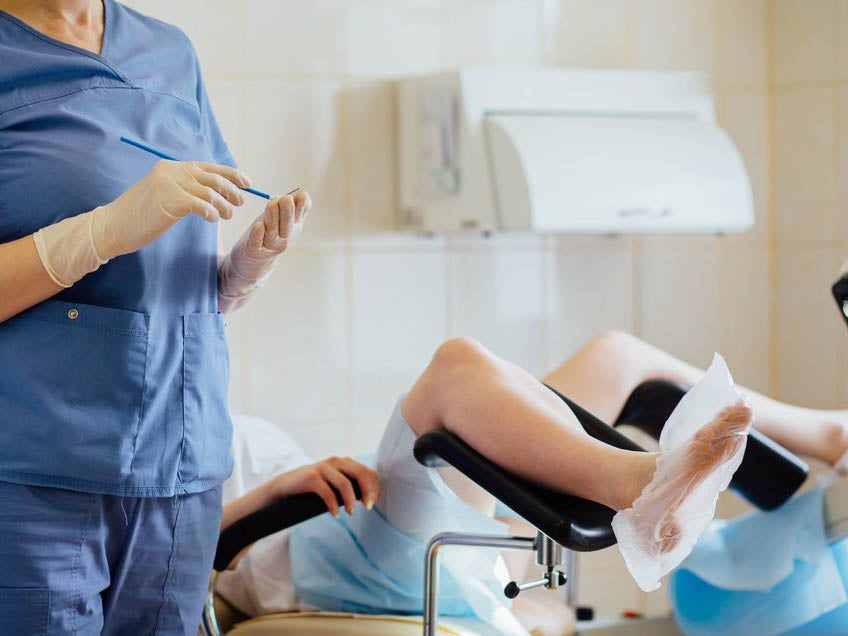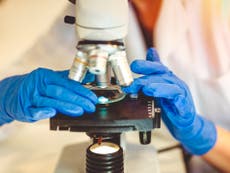It’s not a ‘home smear test’ trial – it’s a ‘home HPV test’. Here’s why the distinction matters
It’s impossible for women to carry out a full cervical screening on their own – but an HPV test where you don’t need to take your knickers off in front of a stranger is a step forward


Your support helps us to tell the story
From reproductive rights to climate change to Big Tech, The Independent is on the ground when the story is developing. Whether it's investigating the financials of Elon Musk's pro-Trump PAC or producing our latest documentary, 'The A Word', which shines a light on the American women fighting for reproductive rights, we know how important it is to parse out the facts from the messaging.
At such a critical moment in US history, we need reporters on the ground. Your donation allows us to keep sending journalists to speak to both sides of the story.
The Independent is trusted by Americans across the entire political spectrum. And unlike many other quality news outlets, we choose not to lock Americans out of our reporting and analysis with paywalls. We believe quality journalism should be available to everyone, paid for by those who can afford it.
Your support makes all the difference.News of the first NHS trial for HPV self-testing – the YouScreen kit – is a positive step forward for anyone at risk of cervical cancer.
It’s helpful for all of those who face barriers accessing screening at their GP surgery: such as those frightened of catching Covid-19, who feel embarrassed, or who may have certain cultural barriers that prevent them from seeking out these vital health checks.
People who find cervical screening particularly difficult, or near impossible, as they have experienced sexual trauma, FGM, vaginismus, body dysmorphia – or those with physical or learning disabilities – should find it an easier, less anxiety-inducing route to keeping themselves healthy that can be done in privacy and in their own time. You don’t even need to take your knickers off in front of a stranger.
However, the announcement of the trial – which will take place in London, and involve some 31,000 participants – has also shone a light on the confusion that exists around the current cervical screening programme. As soon as the story broke, The Eve Appeal was hit with a tidal wave of comments and questions. People were concerned about “at home” testing, namely: whether they would be able to manage to do it, and if it would be as effective as going to their GP.
There was much confusion around the difference between a swab for HPV (the virus that causes the vast majority of cervical cancers) and the collection of cervical cells. Matt Hancock, the health secretary, said in a tweet that “over 31,000 women will be offered kits to carry out smear tests in the privacy & convenience of their own homes in a trial” – which critics such as The Vagina Museum explained is incorrect, because it’s impossible for women to carry out a cervical screening on their own.
I get it – I can see where the confusion comes in, but what this really goes to show is that the language around cervical screening has become quite confusing. This test used to be called the “smear” test, because it involved smearing cells on a glass plate. In the US, it’s called the “pap” test, after the medic and researcher George Papanicolaou, who created the test.
We quite often hear an amalgamation of the two: “Pap smear”. However, the cervical screening programme updated its procedure in 2003, and moved to cell collection. But the language stuck.
In 2019, the cervical screening programme changed again; and although the test is taken in the same way (using a speculum and a small brush to collect cells on the cervix, which is then sent off for analysis), what they check for is different – it’s just the language which hasn’t changed.
In the current NHS programme, your cervical cells get sent off to a lab and checked for high-risk strains of HPV, the very common virus which causes 99.7 per cent of cervical cancers. If you are found to have potentially cervical cancer-causing HPV, the sample is analysed further, to see if there are any abnormalities to the cells on your cervix.
If there are abnormalities, then you are referred for a colposcopy (further investigation that looks at the cervix) and the cells are removed to prevent cervical cancer from developing.
When it comes to self-sampling HPV tests, these aren’t “smear tests” per se – but they do test for HPV; so they cover the first stage of the current cervical screening programme that normally takes place at your GP surgery.
Those taking part in the trial will use a swab, a little like a long cotton bud, to take a sample from their vagina – which they’ll then post off. The sample will be checked for HPV, much like the first stage of analysis on our cervical screening programme used in the NHS today.
If they are found to have HPV they will be contacted and asked to come in for a cervical screening test to get a sample from their cervix to look for abnormal cells, the same as the second step of analysis in our current programme.
You might read this and think, well, for people with barriers, won’t those barriers still exist when they are called in for phase two of screening, and need to go in to see their GP? That’s true – self-sampling is not an answer to all of the problems stopping people from getting their cervical screening done, but it is a much-welcomed, positive step forward.
It increases accessibility – some studies report that offering HPV self-sampling increased participation by around 10 per cent. A health test that can be done at home, in your own time, privately and without you needing to get naked from the waist down, is surely a step in the right direction.
We’re really looking forward to the results. In the meantime, we’re going to work closely with medics, health charities and others to get some consistency into the language around cervical screening and HPV testing. It’s too important to leave this set of health messages to chance.
Lydia Brain works for gynaecological cancer research charity The Eve Appeal



Join our commenting forum
Join thought-provoking conversations, follow other Independent readers and see their replies
Comments